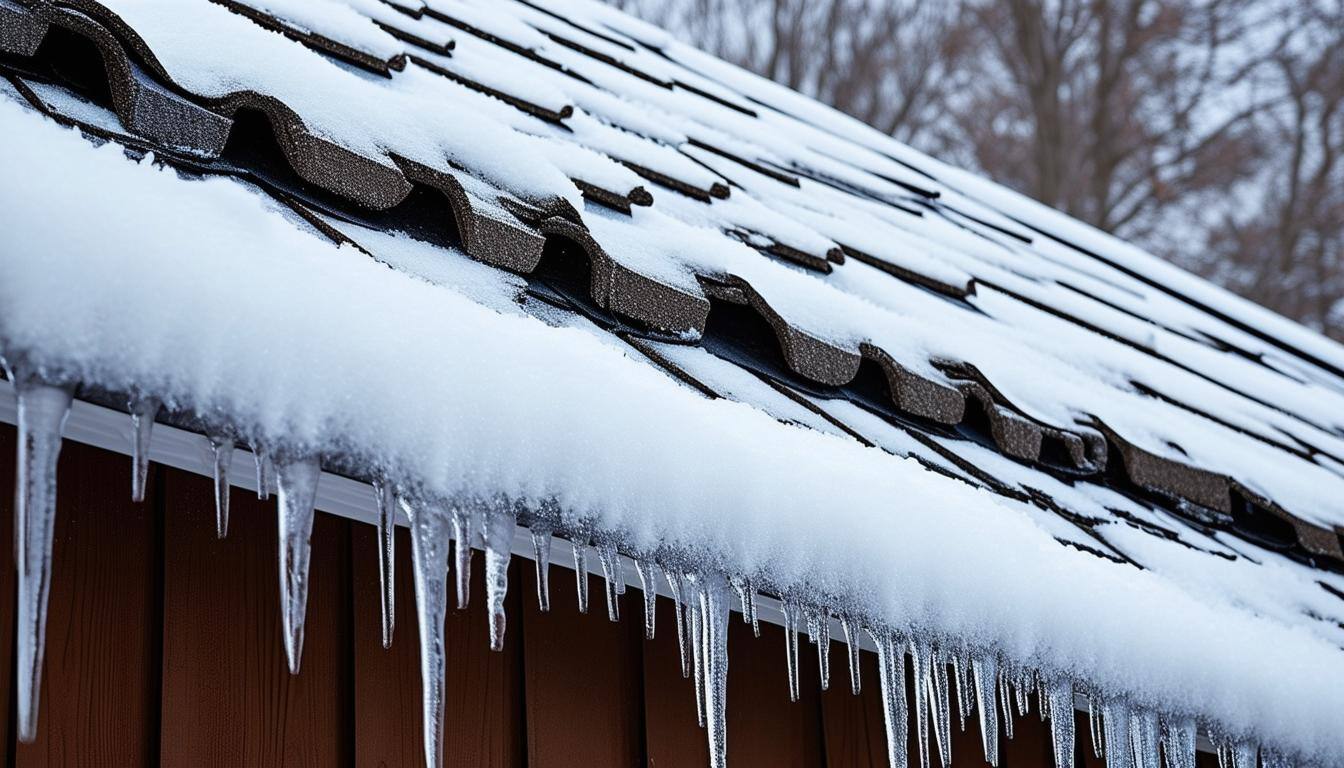Search for topics or resources
Enter your search below and hit enter or click the search icon.
October 30th, 2024
3 min read

With winter coming to South Arkansas, a sudden chill can make your roof a mess. While you may not be used to the effects of chillier climates like in other parts of the States, you can still get ice dams on your ceiling. Dealing with the water damage, leaks included, in the aftermath of a heavy freeze can turn the cold season into a severe—and costly— headache.
As an IICRC-certified firm, we at Restore-It have helped homeowners handle a range of water damage issues caused by freezing weather and roof buildup. With over 50 years of combined experience in the business, we know how to prevent ice dams and deal with the problems they can create. We're here to share some solid advice on keeping your home safe, dry, and ice-free during the colder months.
This article will cover the basics of ice dams, provide practical tips to prevent them, and tell you what to do when they form. So, follow along, and let's get you prepared for winter!

These ice formations in the upper part of your roof happen when the space gets warm enough to melt snow, but the edges remain cold. As the melted snow runs through the colder eaves of your roof, they freeze again, creating a dam. Said dam traps more water, seeping back under the shingles and, finally, into your home.
Poor insulation, inadequate ventilation, and temperature fluctuations during the cold season are the main culprits. These conditions can damage your home and result in expensive repairs and construction work.
Whether you're worried about a potential "Snowpocalypse" or want to keep your home in good shape, taking preventative action can make all the difference. Here are some expert tips designed to help prevent ice dams and avoid costly roof damage, ensuring your home stays safe and cozy through the winter:
The key to avoiding ice dams is prevention: if there is no snow to melt and create a mess, there will be no problem! But don't worry, you don't have to climb your roof, exposing yourself to a dangerous fall, to clean it. These days, you can get a lightweight, long-handled roof rake from most hardware stores and comfortably clear excess snow from your roof. After heavy snowfall, take the rake and remove excess buildup. Think of it like giving your roof a "clean slate" before it can cause any issues.
If there is one thing autumn leaves behind, it is, well... leaves. But other than being the punchline to an unfunny pun, leaves (and other debris like pine needles) can contribute to creating ice dams on your roof. Clearing your gutters during late fall so all the melted water has a place to go will prevent a disastrous winter scenario.
You should also consider installing gutter guards, a low-maintenance approach readily available in most hardware stores. Given trees' propensity to shed their needles and leaves at the first sign of cooler weather, gutter guards are a good solution. Think of gutter guards as "no trespassing" signs for debris.
Effective attic insulation keeps warm air from escaping, reducing the chance of melting snow, refreezing on your roof, and forming ice dams. Sealing gaps around your attic's vents, chimneys, and lights will further prevent warm air from seeping through, helping maintain an even roof temperature.
On the other hand, roof ventilation will let air circulate and prevent the uneven temperatures that lead to snow melting and then refreezing. Installing vents along the underside of your roof's eaves can help release warm air before it builds up. For a top-notch job, we suggest you look into hiring a licensed professional.
An ice and water shield is a thick membrane applied along the eaves and roof valleys to create a waterproof barrier. This prevents ice from accumulating along roof edges, protecting the roof from ice dams and leaks.
Another effective way to counter ice dams is to install heated de-icing cables along the roof's edge to melt snow and ice. This ensures a smooth flow of water into your home's gutters. Both options involve an upfront—but worthy—investment.
Just as keeping your home's temperature the same during the day and night can help you prevent frozen pipes, it can also reduce the risk of heat escaping into your attic. Playing around with your thermostat too much during winter can lead to a heated roof that will melt the snow unevenly, refreezing and forming ice dams.
So, while ice dams might not be the first thing that comes to your mind as a homeowner from South Arkansas, they can still become an unexpected winter hazard. Keeping your roof ice-free doesn't just save you money—it brings peace of mind knowing you've prevented a winter mishap. However, if you notice that a dam has formed, the chances of water damage are high, so you will need professional water damage restoration services. Thankfully, you can contact us for all your water damage emergencies: we're here to help keep your home safe and sound throughout the colder months.
Topics: